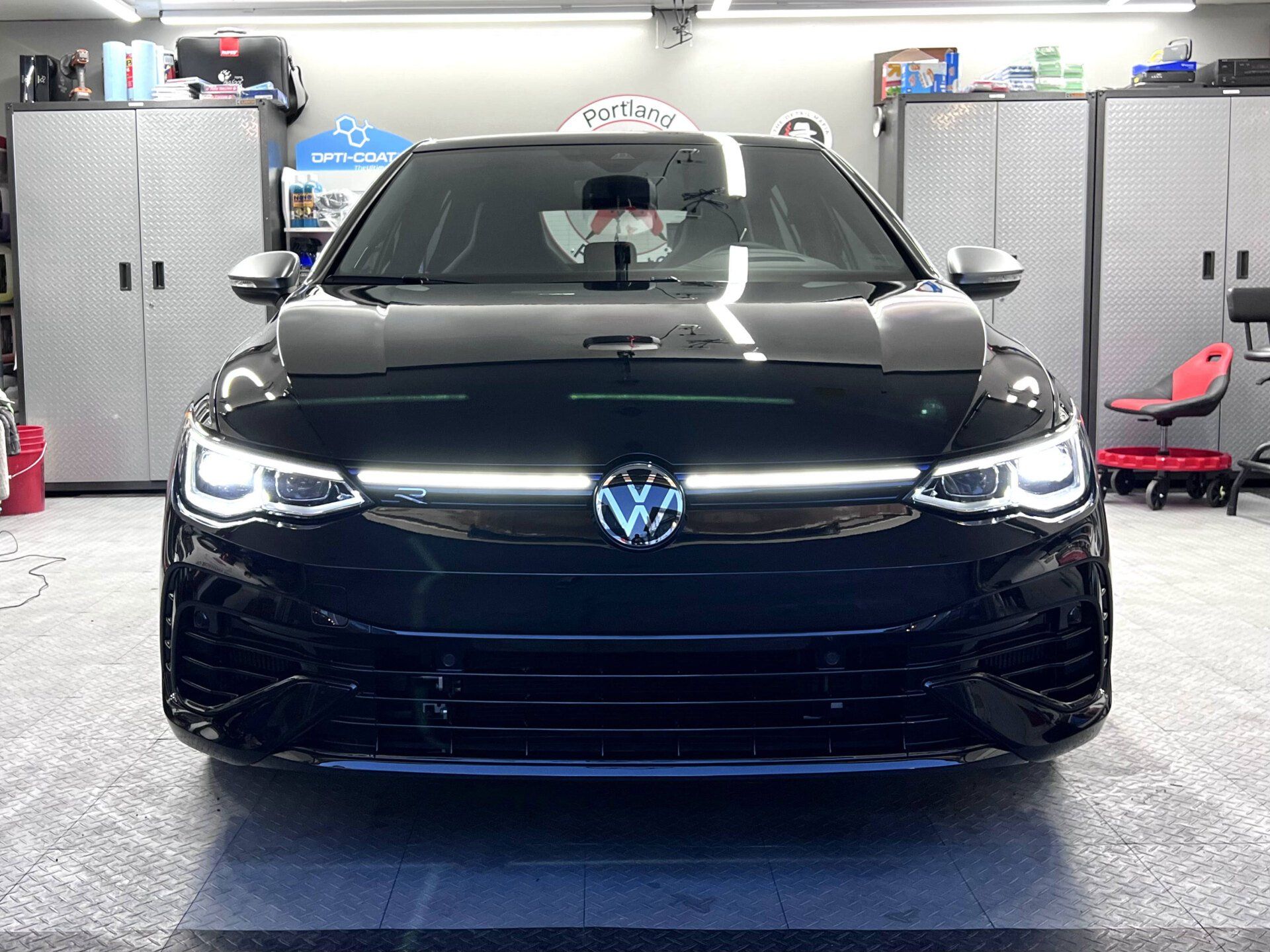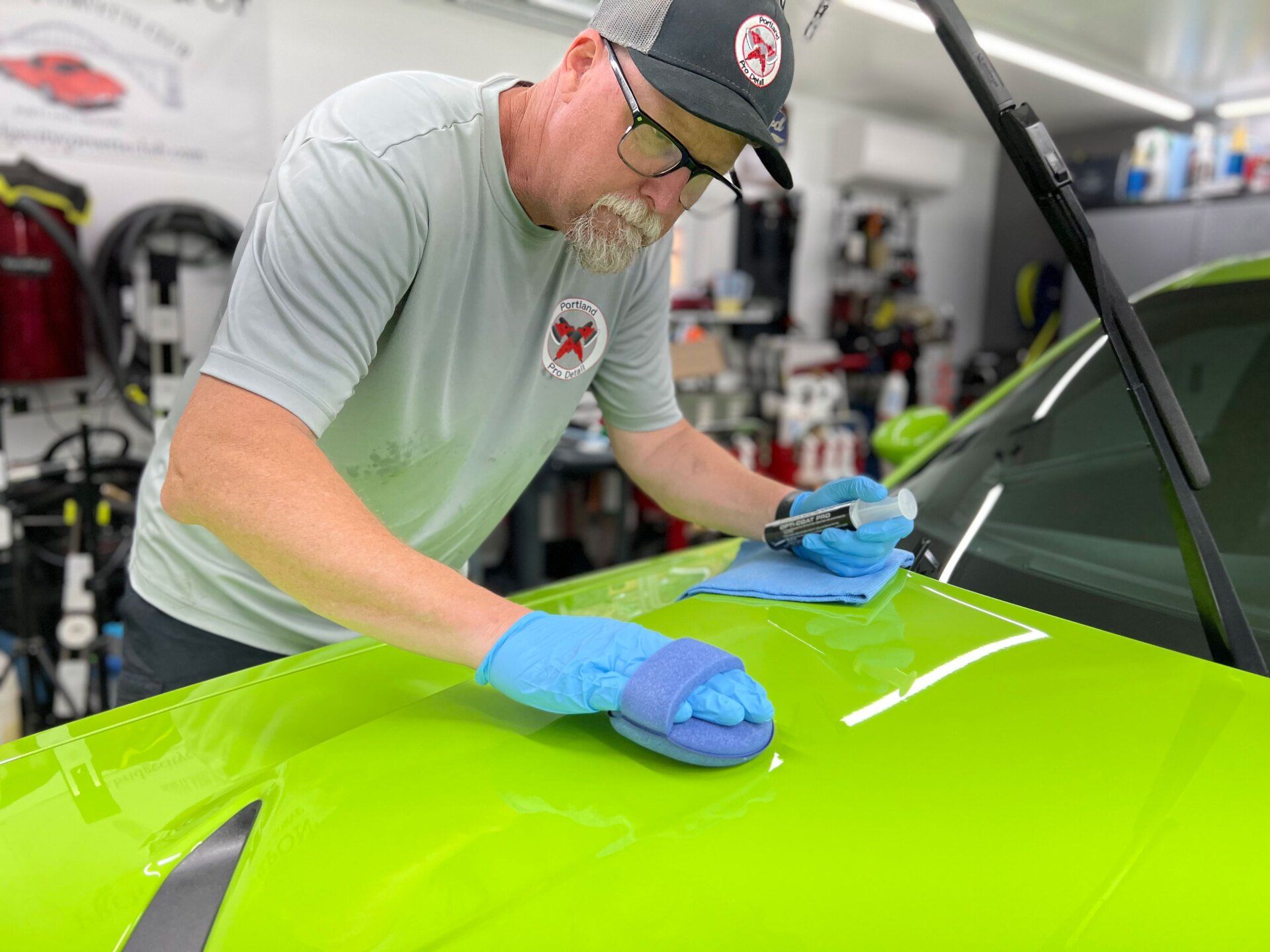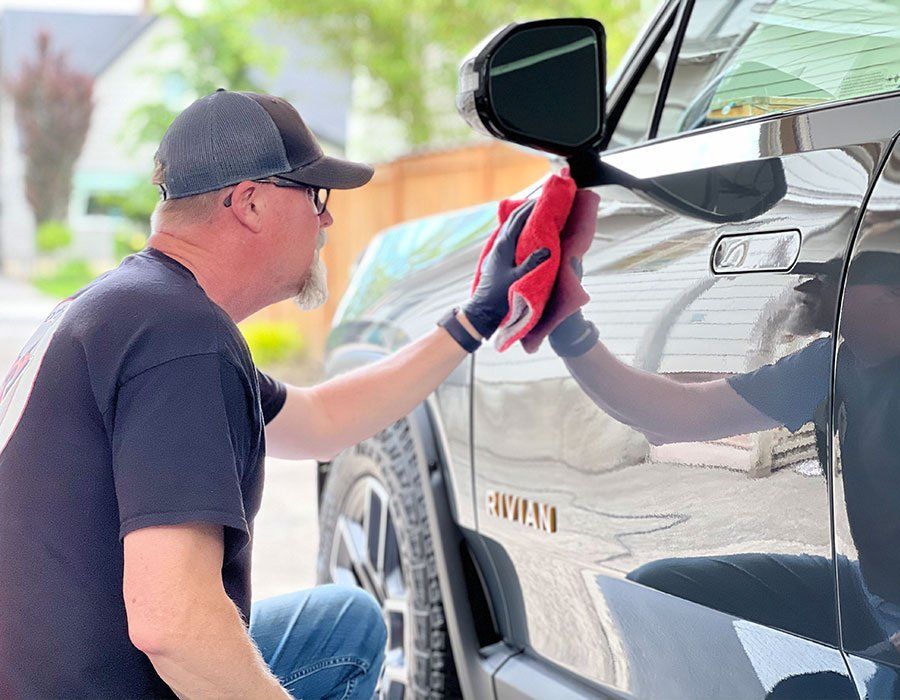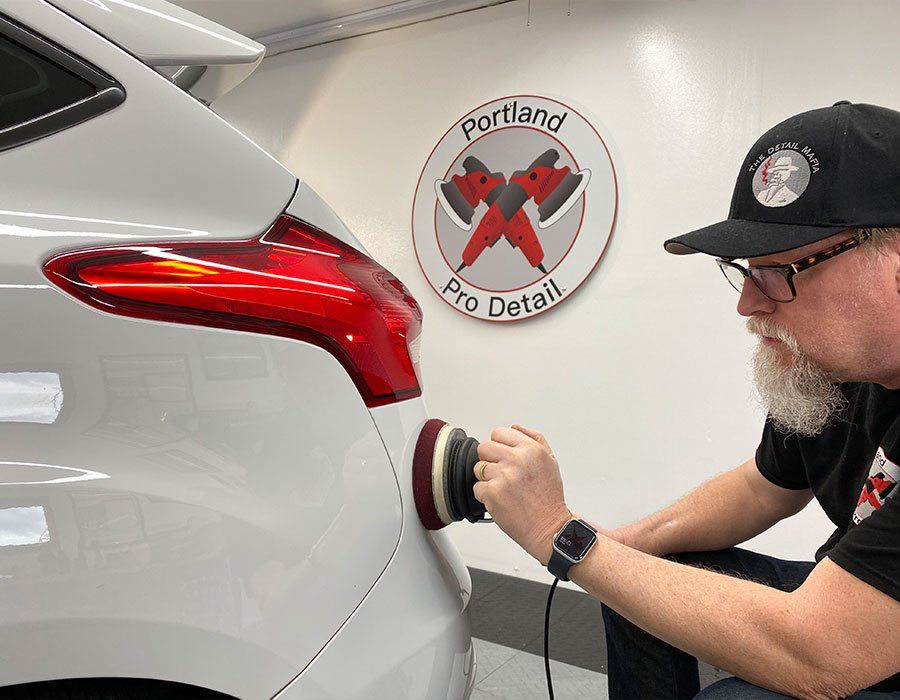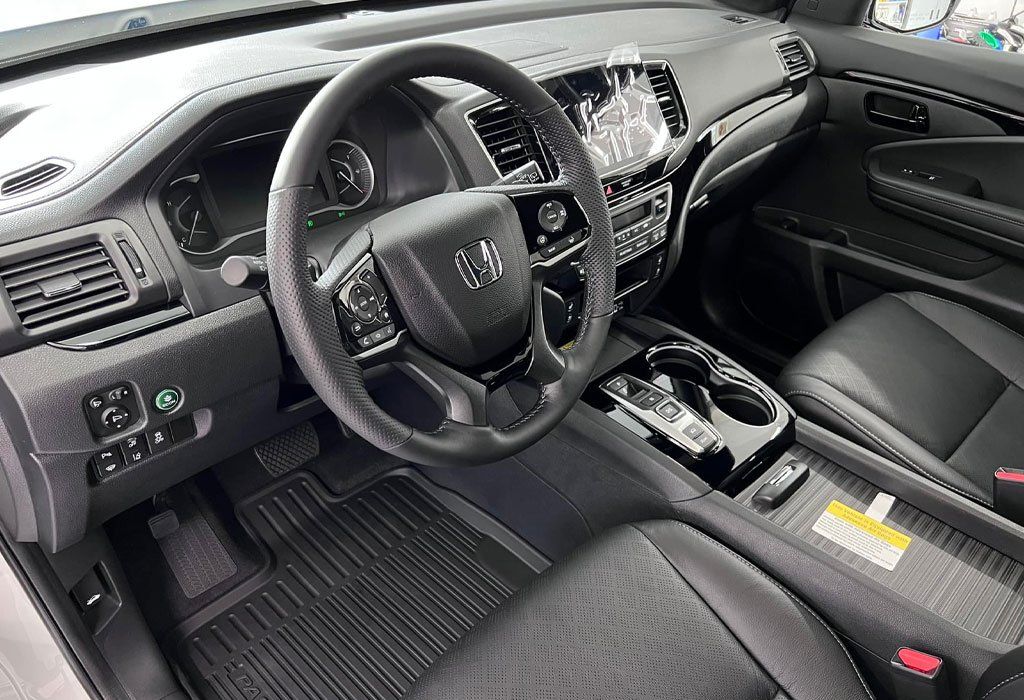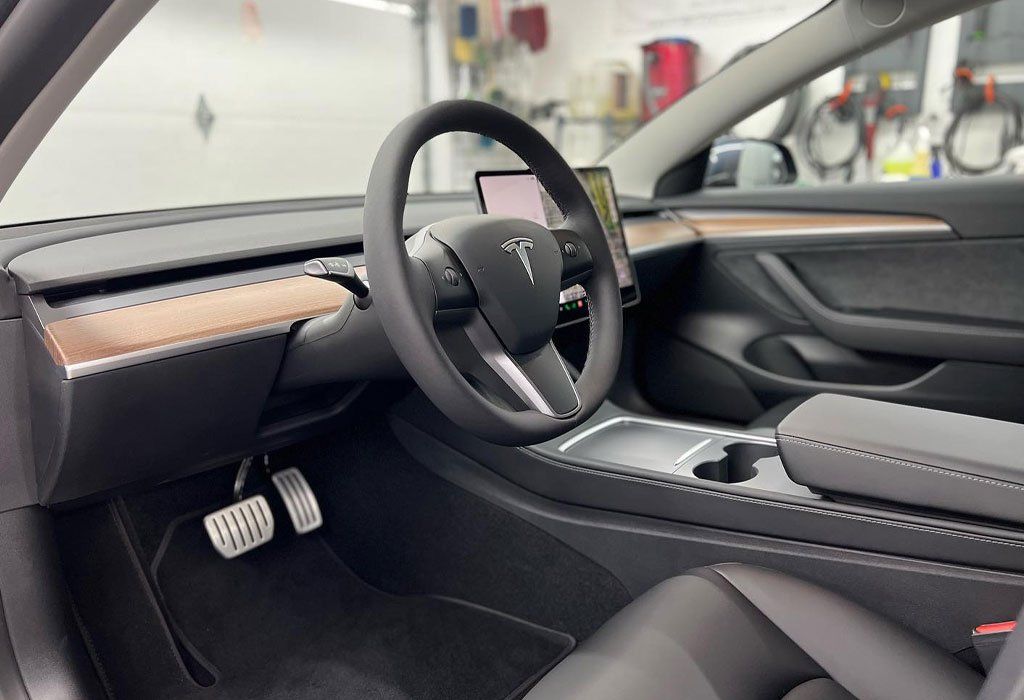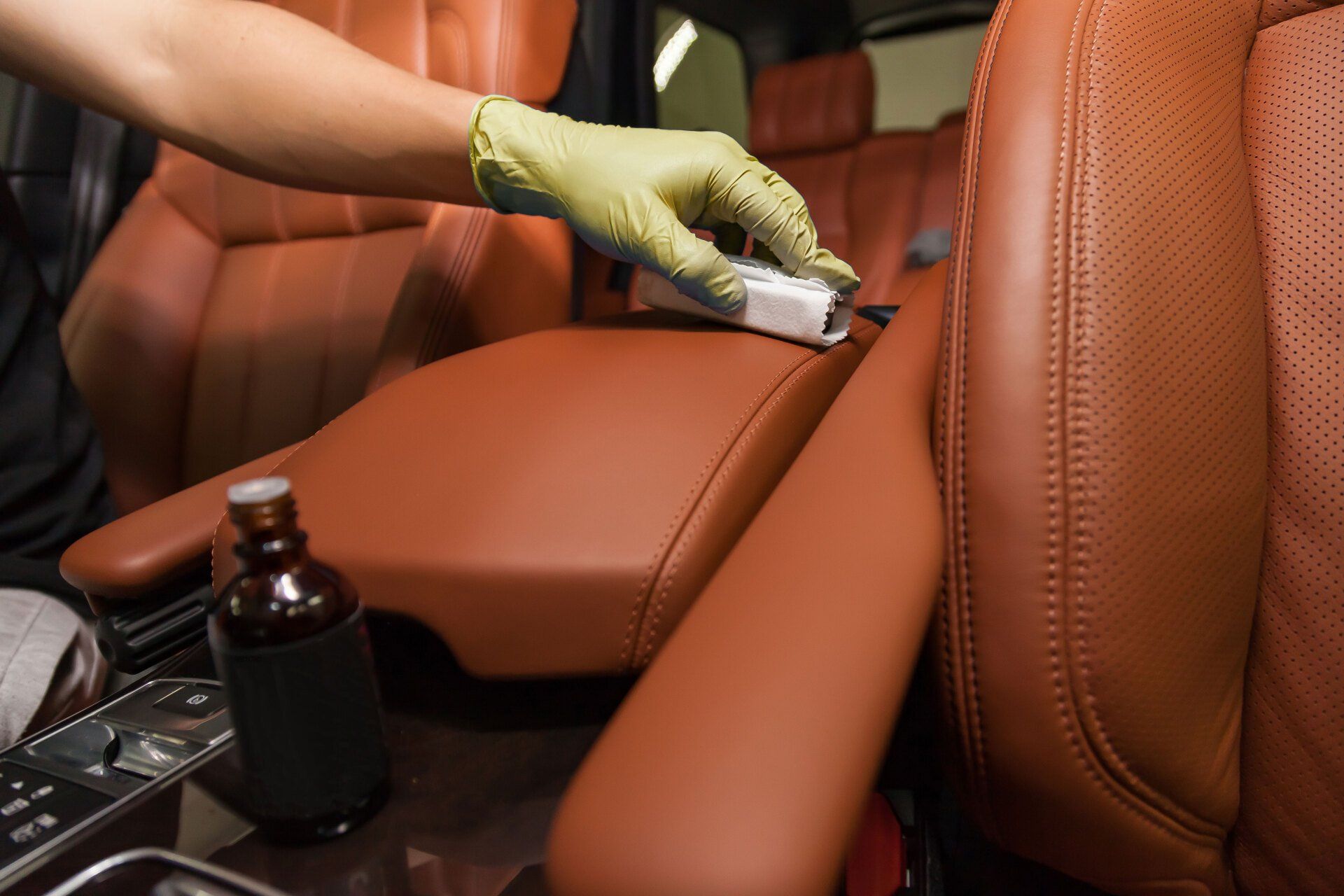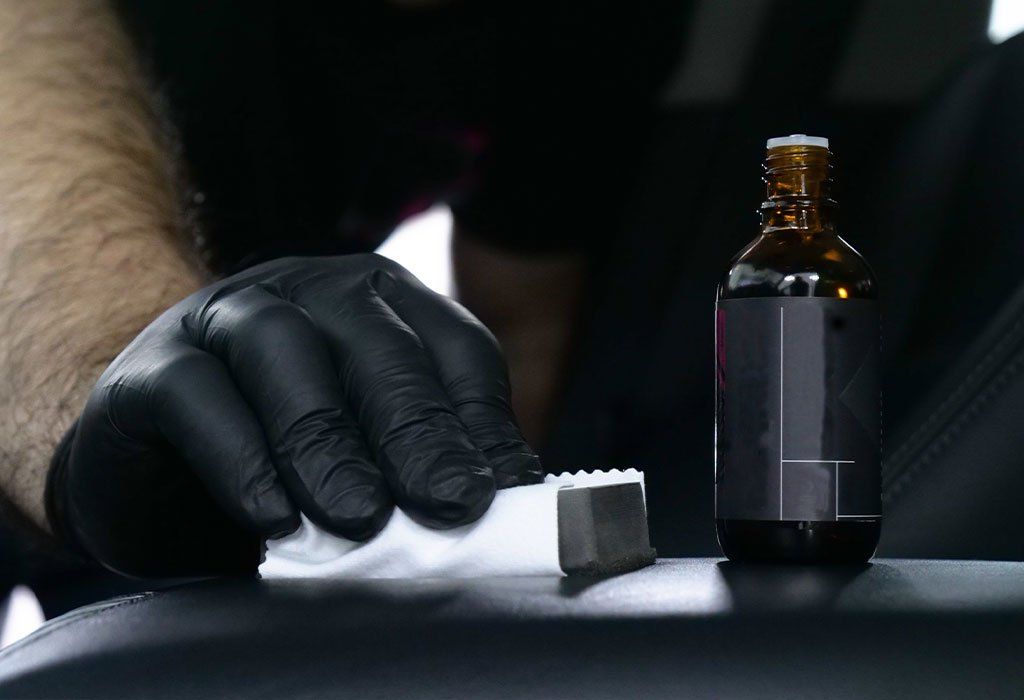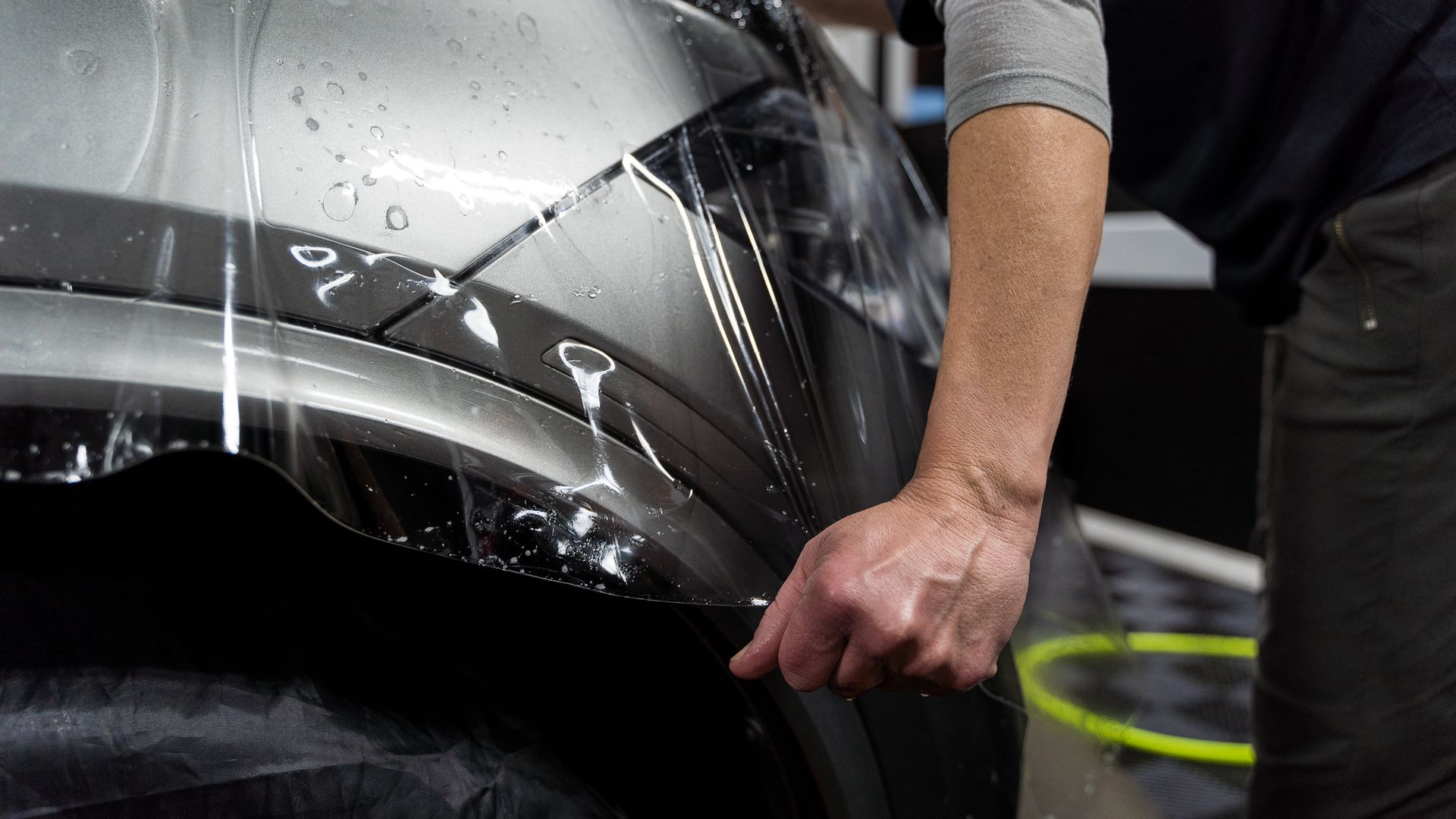The Cost of Interior Ceramic Coating: Is It Worth It? - Pros and Cons
CALL (503) 444-7415
Every car enthusiast understands the satisfaction of a well-maintained interior—free from stains, dirt, and wear. It isn't just about aesthetics; it's about preserving value and enjoying the space where you spend so many hours driving or relaxing during weekend road trips. The buzz around interior ceramic coating claims it offers revolutionary protection against water, dirt, and everyday wear.
Yes, absolutely. Interior ceramic coating provides long-lasting protection against wear and tear, makes cleaning effortless, and enhances the overall aesthetics of the vehicle's interior. The initial investment in ceramic coating can ultimately save on maintenance costs and preserve the value of your vehicle for years to come.
The Basics of Interior Ceramic Coating
You've decided to give your vehicle's interior surfaces an extra layer of protection with ceramic coating. But what exactly is this coating and how does it work? Well, interior ceramic coating is like a shield for your car's interior materials, such as leather, plastic, vinyl, and fabric. This hydrophobic sealant repels water, dirt, and stains, making it easier to clean up spills or messes. Let's break down these steps to better understand what's involved in the process.
- Surface Preparation: Before applying the interior ceramic coating, it’s essential to deep clean the interior surfaces thoroughly. This step ensures that any dirt, oils, or residues are removed from the surfaces. Without this thorough cleaning, the coating may not adhere properly, leading to ineffective protection. Proper surface preparation sets the stage for a successful ceramic coating application by creating a clean, ideal environment for the protective layer to bond with the surfaces.
- Application: Once the surfaces are immaculately clean and dry, it's time to apply the interior ceramic coating. This is usually done using a small applicator pad or spray to ensure an even distribution of the product across each surface. The key here is to apply the coating in a thin, uniform layer. Depending on the specific product being used, following the manufacturer's instructions for application is crucial to achieving optimal results.
- Curing:
After applying the ceramic coating, it needs time to cure and bond effectively with the interior materials. Curing times typically range from 24 to 48 hours, during which the coating forms a strong bond with the surfaces, providing long-lasting protection. Imagine curing as akin to letting glue dry—just like glue needs time to set and create a lasting bond between two materials, so does ceramic coating. Rushing through this final step can compromise the durability and efficacy of the protective layer.
Comparing Coating Prices
The cost of ceramic coatings for your car's interior varies widely, and it's essential to understand what each price point includes. When looking at ceramic coating for your vehicle's interior, you'll often come across different package levels, each with its own set of offerings and corresponding price tags. Let's break down what you could expect from various price points to help guide your decision-making process.'
- Basic Package: At the lower end of the spectrum, you might find basic packages priced between $300 and $500. These usually involve a single layer of coating. While this is a budget-friendly option, it may not offer as much durability or additional benefits like UV protection.
- Mid-Tier Package: In the $500 to $800 range, mid-tier packages tend to include multiple layers of interior ceramic coating and added features such as UV protection. This may be a good middle ground in terms of cost and the level of protection and enhancement it provides.
- High-End Services: For those willing to invest upwards of $1,000, high-end services typically offer comprehensive packages that cover every interior surface with premium materials. These packages often boast advanced features, extended warranties, and a greater focus on long-term durability and visual appeal.
When comparing prices, keep in mind that higher costs may also reflect additional benefits such as longer-lasting protection, improved aesthetic enhancements, and more specialized care tailored to your specific vehicle. Understanding the varying price points gives you a peek into what each package offers and can help you make an informed decision based on your budget and desired level of interior protection and enhancement.
Key Benefits to Consider
First off, let's talk about protection against stains. Imagine spilling your morning coffee or knocking over a soda can in your car. Without an interior ceramic coating, that spill could leave a nasty stain that's tough to remove. But with a hydrophobic ceramic coating, the liquid won't be able to penetrate the surface as easily, reducing the likelihood of stubborn stains. This hydrophobic nature creates a barrier, preventing liquids from being absorbed by the interior surfaces. Spills bead up on the coated surface, allowing you to quickly wipe them away before stains have a chance to set in. This means fewer headaches trying to remove stubborn stains, preserving the pristine look of your vehicle's interior.
Next up is ease of cleaning. Whether it's dust, dirt, or grime, these nuisances don't stick as firmly to surfaces treated with ceramic coatings. Think of it like having a shield that repels dirt and grime, making routine cleaning a breeze. Instead of spending hours scrubbing and using harsh chemicals, you'll find that a quick wipe-down with a gentle cleaner leaves your interior looking fresh and clean. This reduction in adhesion also means less wear and tear on your interior materials. Over time, regular cleaning can lead to deterioration of the surfaces due to friction and the use of cleaning agents, but with a ceramic coating, this is significantly minimized. The long-term benefit? Sustained longevity of your interior materials, potentially saving you from costly repairs or replacements down the line.
Finally, let's consider enhanced aesthetics. Have you ever looked at an older car and been impressed by how well-maintained the interior looks? That's the kind of effect an interior ceramic coating can have. The coating has a rejuvenating effect on interior materials, giving them a polished and refreshed appearance. The enhancement doesn't just stop at preservation; it extends to restoration as well. Faded colors can regain their vibrancy, while dull finishes can attain a renewed luster. By improving the overall aesthetics of your vehicle’s interior, a ceramic coating can help maintain its value and appeal for years to come.
With these insightful benefits in mind, it becomes evident that investing in an interior ceramic coating not only offers practical advantages such as protection against stains and easy upkeep but also elevates the overall aesthetics of your vehicle's interior.
Surface Durability and UV Protection
When you apply a ceramic coating to your car's interior surfaces, you essentially give them an extra layer of defense. This layer acts as a shield against everyday hazards such as spills from food or drinks and the general wear and tear that accumulates over time. It's like a protective force field for your car's interior aesthetic. This hard, protective layer also goes a long way in maintaining the pristine look of your interior surfaces. It prevents damage from chemical spills, which is crucial for areas commonly exposed to cleaning products, food, and drinks. With interior ceramic coating, you can worry less about accidental stains and spills marring the beauty of your car's interior.
Moreover, considering the frequent exposure to sunlight that your car experiences, especially if it’s parked outside, UV protection is a vital component. Sunlight can cause irreversible damage to surfaces over time, leading to fading and discoloration. This is especially true for leather and fabric surfaces, which tend to show signs of wear due to prolonged UV exposure. For instance, think about leather seats—without proper protection, they can lose their luster and become cracked and faded, significantly reducing the overall visual appeal of your vehicle's interior. By offering UV protection, ceramic coatings ensure that your car's interior looks fresh and vibrant for longer periods. They act as a barrier against the harmful effects of the sun's rays, preserving the original colors and texture of the surfaces.
So, when considering whether ceramic coatings are worth the investment for your car’s interior, it’s essential to recognize their role in enhancing surface durability and providing UV protection. The longevity and aesthetic upkeep that these coatings offer make them a valuable addition to your car care routine—a small investment with long-term benefits.
Shine, Finish, and Additional Costs
Part of the allure of ceramic coatings is the way they bring out a glossy shine and enhance the finish of surfaces like leather seats, plastic trims, and dashboard panels. It's like giving your car or interior surfaces a rejuvenating spa treatment—everything looks renewed and vibrant.
Firstly, you may need to invest in specialized tools for application. This includes applicator pads, microfiber cloths, and drying towels. These tools are essential for achieving a professional-level finish when applying the coating. The good news is that these items are reusable for future applications, so they're more of a one-time investment. However, it's important to factor in this initial cost, which can range from $50 to $100 depending on the quality and quantity of tools purchased.
Now, let's talk about reapplication. Ceramic coatings aren't permanent—while their durability is impressive, they still need to be reapplied every 1 to 2 years based on usage and wear. Keep in mind that this timeframe is just an estimate; high-traffic areas or surfaces exposed to harsh environmental elements might require more frequent reapplications. This routine upkeep helps maintain the protection and aesthetics provided by the coating.
One might argue that this additional maintenance seems like a recurring cost burden. However, when weighed against potential repair expenses due to unprotected surfaces, it becomes clear that regular reapplication is a wise investment in preserving the longevity and appearance of interior spaces. Considering these factors before committing to ceramic coating enables individuals to make an informed decision regarding their overall budget and maintenance plan.
Final Verdict: Is Ceramic Coating Worth It?
Cost is a significant factor when deciding whether to invest in interior ceramic coating for your car. However, it's not just about the price; it's about value. If you're willing to invest in long-term protection, reduced maintenance, and a polished look for your car's interior, then ceramic coating could be well worth the cost.
Ceramic coating provides a durable protective layer on interior surfaces that can last for 2-5 years. This means you won't need to wax or apply other treatments every few months, saving both time and money in the long run. Additionally, the hydrophobic properties of ceramic coating make spills and stains easier to clean, preserving the new look of your car's interior for an extended period. While some may argue that traditional waxing or conditioners are much more affordable than ceramic coating, it's true that these alternatives come at a lower upfront cost. However, they often lack the durability and longevity of ceramic coatings. Frequent reapplication and upkeep add up over time, making ceramic coating a more cost-effective option over the long term.
To put things into perspective, traditional detailing may need to be done every three months, with an average cost ranging from $100 to $200 per session. This adds up to $400 - $800 per year just for detailing. On the other hand, the average cost of interior ceramic coating for a midsize car ranges from $300 to $900 with a lifespan of 2-5 years. Think of it this way: Just like investing in high-quality furniture or appliances that stand the test of time, interior ceramic coating is an investment in protecting and maintaining the value of your car's interior. It's also important to consider the additional benefits that come with ceramic coating, such as enhanced aesthetics and a longer-lasting effect.
The decision ultimately comes down to individual preferences for protection, appearance, and convenience. So if you value ease of maintenance and long-term preservation of your car's interior, then interior ceramic coating could indeed be a worthwhile investment for you. While the initial investment may seem higher, the long-term benefits of ceramic coating demonstrate its value as a protective and cost-efficient solution for maintaining your car's interior. It's an investment in both practicality and aesthetics, offering lasting benefits that outweigh the initial expense.
Exemplary Interior Ceramic Coating Solutions in Portland, OR
Give your vehicle a lasting shine and exceptional protection with Portland Pro Detail’s premier interior ceramic coating solutions in Portland, OR. Our skilled team applies high-quality coatings that guard against environmental damage and maintain your interior’s pristine condition. Experience the benefits of advanced protection and stunning aesthetics with our expert service. Contact us today to schedule your appointment and keep your vehicle looking its best for years to come. Call us at (503) 444-7415 to get started!
Portland Pro Detail Blog
